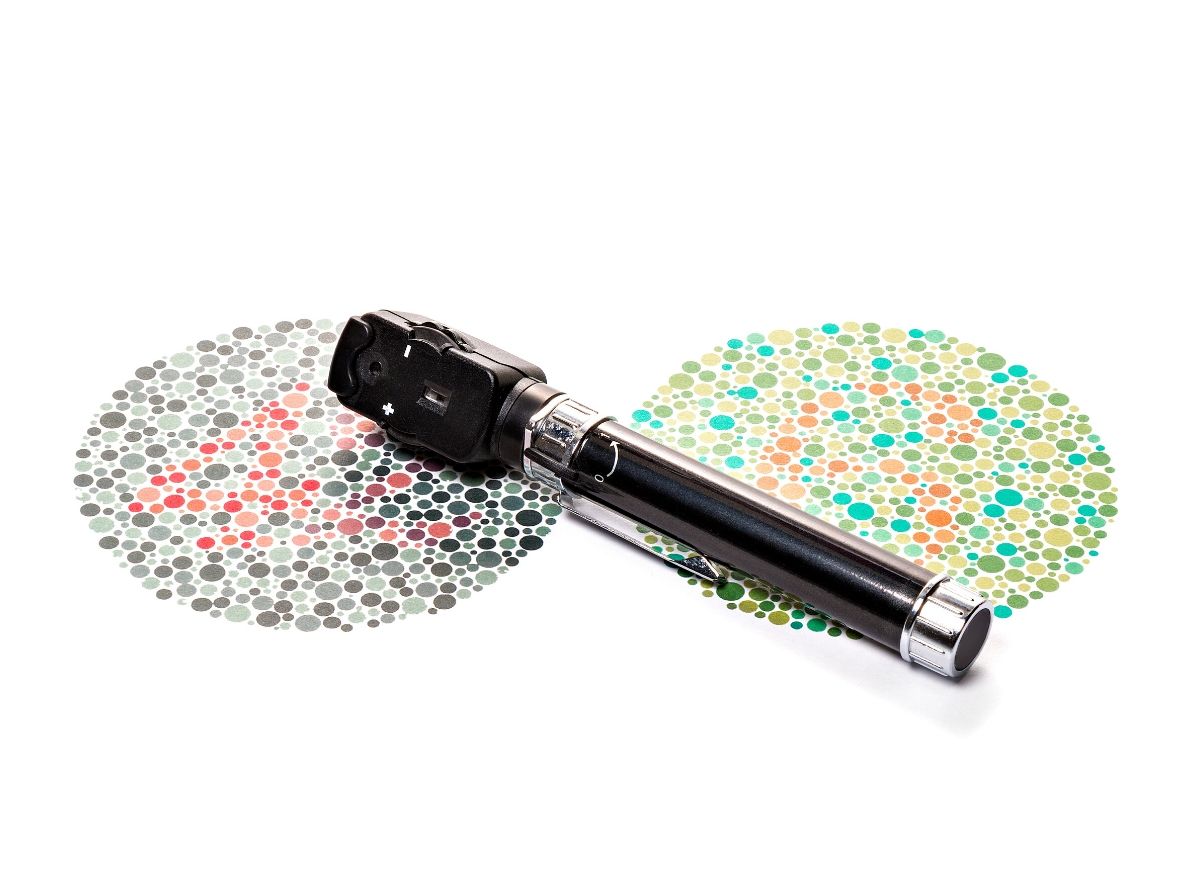Different Types of Color Blindness

If you have ever had difficulty seeing and differentiating colors, you may be experiencing a color-blind deficiency. Colorblindness is most commonly a genetically inherited deficiency, but not all cases of colorblindness are the same, and some cases could further develop over time. There are multiple types of colorblind deficiencies, each creating a specific view of the color spectrum and different rates of commonality among genders and types. Before diving into the different types of color blindness, it is important to know how color blindness works.
How Color Blindness Works
The human eye sees color through wavelengths of light processed in the retina. Within the retina, photoreceptors called rods and cones are responsible for passing the information received from the wavelengths of light to the brain. While rods are sensitive to the wavelengths of light responsible for night vision, cones are responsible for color vision. There are three types of cones – red, green, and blue cones, each with different light-sensitive pigments that respond to a specific point of sensitivity to light wavelengths. In instances of normal color vision, this process would give the ability to see all colors by using the cones sensitive to the three red, green, or blue wavelengths of light at the right point of sensitivity. Color blindness will occur when the cones fail to respond to the variations and points of sensitivity in wavelengths appropriately. When one or more of the cones cannot respond properly to send the right message to the brain, we are unable to see the colors correlated to those cones.
Types of Color Blindness
The three different types of color blindness are monochromatism, dichromatism, and anomalous trichromatism. Dichromatism and anomalous trichromatism can be distinguished even further by three types of malfunctioning cones: tritanopia (blue light), deuteranopia (green light), and protanopia (red light).
Monochromatism
Monochromatism exists when no cones or just one type of cone is available. Monochromatism is also known as complete color blindness, resulting in vision that can only utilize shades of gray, black, and white.
Dichromatism
Dichromatism refers to when only two different cone types are available to perceive color. In this case, people are unable to see the colors related to the missing cone. People with tritanopia dichromatism are unable to see blue colors, whereas people with deuteranopia dichromatism are unable to see green colors, and those with protanopia dichromatism are unable to see red colors. Red and green colorblind deficiencies (deuteranopia and protanopia) are very similar, as these cones often overlap. Therefore, protanopia and deuteranopia can often eliminate the ability to see both red and green, showing the world in vibrant blues and yellows, as well as very similar browns, oranges, reds, and greens. However, when presented singularly, those who experience protanopia can see green hues and those dealing with deuteranopia can see red hues.
Meanwhile, each type of dichromatism has specific differences. A protanopia or red deficiency makes it easier to confuse black and red, dark browns with dark greens, oranges and reds, and some blue tones with reds, purples, and dark pinks. Deuteranopes also known as green malfunctions, more likely confused reds and greens, bright greens and yellows, pale pink colors and light grey, and reds and browns. Lastly, tritanopia or blue deficiency, makes it difficult to see yellow and blue colors and often confuses light blues and greys, dark purples with black, and greens with blues, oranges, and reds.
Anomalous Trichromacy
In anomalous trichromacy, all three types of cones are present, however, one cone’s light sensitivity is altered, creating a reduced color spectrum. This is one of the most common types of color blindness, as it creates an impairment in hue differentiation of colors rather than a complete loss of colors.
With protanopia or red deficiency, red, orange, yellow, and some yellow-green colors are less vibrant and saturated. Similarly, deuteranopic, or decreased green cone sensitivity makes it difficult to distinguish different hues of green, brown, orange, and red. Like tritanopia dichromatism, anomalous trichromacy can often make yellows and blues hard to differentiate. However, instead of a complete loss of color, the vibrancy of the hues is simply altered.
Commonality of Each Type
The different types of colorblindness all have varying degrees of commonality. Males typically experience inherited colorblindness at a higher rate than females because the genes that play a role in color vision are located on the X chromosome. For women, both X chromosomes must carry the mutation to become colorblind, whereas men only need their singular X chromosome to carry the genes. This makes it much more likely for men to experience color blindness than women. Aside from gender commonalities, each type of colorblindness holds its own degree of commonality.
Monochromatism, or complete colorblindness, is the rarest form of color blindness as it relates to the absence of all three cones. Like their similar properties, dichromatism and anomalous trichromacy have very similar variances. Within the three types of these two impairments, protanopia and deuteranopia have the most prevalent deficiency levels, whereas tritanopia is rarer.
While inherited color blindness is the most common diagnosis of color blindness, factors such as chronic illnesses, accidents, chemical exposure, and medications can also impact the ability to see color.
What Type of Color Blind Am I?
If you have a vision impairment and are wondering what type of color blindness you may have, an eye exam with your optometrist can certainly provide the answers you are looking for, but taking a color blind test online is a quick and easy way to determine which kind of impairment you are experiencing. Online tests provide the same expertise and professionalism as a trip to the optometrist without the inconvenience of making time for an appointment.
Monochromatism, dichromatism, and anomalous trichromatism are the three types of color blindness. These can be further broken up into tritanopia, deuteranopia, and protanopia to determine which colors and hues are not visible based on the cones present in the retina. Color blindness holds varying degrees of impairment that can create minimal to drastic disruptions in daily life. Thankfully, some of the most drastic cases such as monochromatism are rather rare.




